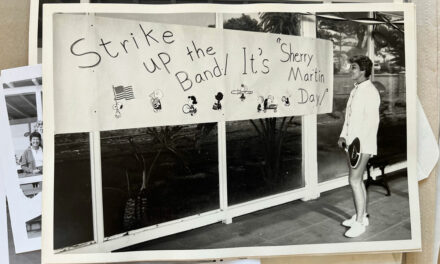
An Episcopal School: Why Are We Doing This?
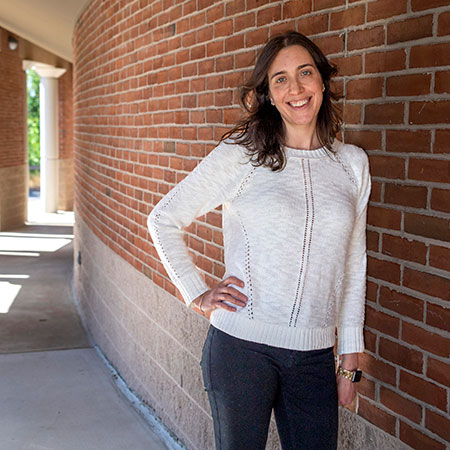
Why Are We Doing This?
The Meaning of Passover
By Susannah Nadler
Upper School English Teacher
Each week during Upper School chapel, a member of the community gives the homily. These are often powerful and personal reflections on their life experiences.
Hi, my name is Ms. Nadler, and even though I’ve worked here for 10 years, this is my first chapel talk.
Almost exactly five years ago, my husband and I were loading our new baby into the car. We were taking him to New York, to my mother’s house, for his very first Seder, a ritual meal that marks the start of the Jewish holiday of Passover. And as the car moved at a crawl, and we listened to our son wail for six hours in his car seat, I remember thinking to myself, why are we doing this?
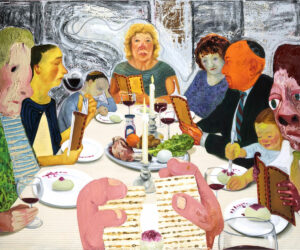
Nicole Eisenman,“Seder”(2010)
A Passover Seder, for those of you who haven’t been to one, is like an epic combination of a holiday meal, an English class, and a religious service. There are readings, discussions, blessings, four cups of wine, and singing –and most of that happens before we even eat dinner.
The seder is a ritual meal that we do the same way year after year. And in that car ride five years ago, my first time bringing the next generation—literally wailing and screaming—home for Passover, the answer to my question—why are we doing this?—is that I ALWAYS went home for Passover. In college, I grumbled about missing classes, but I did it. When I worked in California, I would still fly back to New York for the seder. And in that moment in traffic, with my crying baby in the back seat, I took a deep breath and imagined that all the other cars, inching along I-95, were filled with Jewish people, like me, all of us fulfilling an exodus ritual, all of us trying to make it home in time for the seder. And we did. That’s my identical twin sister, Reena, holding my son, bouncing him to the music of our Passover prayers.
Passover is all about Exodus, the second book of the Hebrew Bible. Here’s a quick recap—think of it as Ms. Nadler’s Sparknotes version of the Passover story.
For reasons that belong to a whole other story, the Israelites, who will become the Jewish people, settle in the land of Egypt. As they have children, and their children have children, the Egyptian Pharaoh feels threatened: this group doesn’t fit in, and its numbers are growing. What if the Israelites somehow undermine his power?
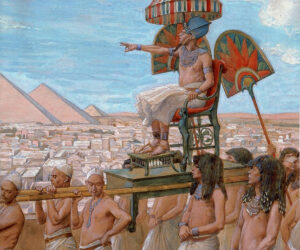
James Jacques Joseph Tissot, “Pharaoh Notes the Importance of the Jewish People” (1896-1902)
Pharaoh’s response to this worry is brutal: he forces the Israelites into slavery and orders that all their first-born sons be drowned in the Nile. This horrific system of population control lasts for 400 years, until one Israelite mother, Yocheved, quietly rebels. She hides her baby boy from his killers and sets him on the Nile in a floating basket. Thinking about my own two small sons, I’m amazed at Yocheved’s desperate bravery: she sends her newborn out onto the water, not knowing if he will live or if she will ever see him again. And by doing this she saves her son from murder and her people from slavery: Pharaoh’s daughter finds the baby, names him Moses, and raises him as her own.
All grown up, Moses encounters a burning bush from which God’s voice emerges. God tells Moses that he must lead the people of Israel out of slavery and into the promised land. Moses is reluctant: he has a speech impediment, for one thing, and he hates talking in public, but nevertheless he goes to Pharaoh’s court and relays God’s demand: let my people go (slide). There are more twists and turns in the story: Pharoah refuses, there are ten plagues, Moses parts the red sea, but, —spoiler alert—the people of Israel ultimately do escape Egypt. They become a free people on their way to the promised land.
The Passover Seder is our yearly ritual to mark this transition from slavery to freedom. As Passover approaches this year, I’m struck by how much has changed for me since my older son’s first Seder five years ago. The pandemic hit, I had another baby, my mom moved to D.C., and now my house is the place where we celebrate Passover.
If you’ll allow me to be totally honest for a moment: my feelings about hosting the Seder at my house are mixed. It always feels meaningful, but the seder is long and takes preparation, there are rituals and rules around food and cleaning, my extended family can be stressful, and every year when Passover comes around, as I’m cooking and scrubbing, and preparing, I have a moment like the one that I had in the car five years ago. I think to myself, why am I doing this? It feels like we just did this last year.
This feeling is complicated by the fact that Jews aren’t supposed to just tell the Exodus story at the seder: we are supposed to imagine that we are reliving the Exodus story. The rabbis say, “In every generation, we must see ourselves as if we personally have come out of Egypt.” When I was a kid, this idea shocked me. We’re supposed to begin each seder feeling as though we are enslaved, and end each seder thanking God for our freedom? How am I supposed to feel enslaved when I’m just hanging out with family, reading texts and singing prayers, waiting for dinner? This disconnect, of course, stems from all the privileges I have in my own life and generation. I’m a straight, white, relatively wealthy, American woman. Even though I do encounter oppression—and sometimes it’s related to my Jewishness—I walk through the world with an extraordinary amount of freedom and safety. What the rabbis ask us to do on Passover is to perform a kind of radical, impossible-seeming empathy: because our biblical ancestors were enslaved, we too are enslaved. Because they were freed, we not only remember, we work to feel the deep relief of leaving oppression behind.
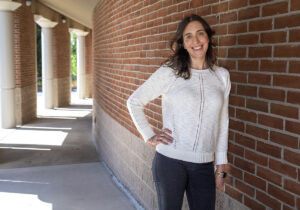
Susannah Nadler
I’ve wrestled with this idea for years. Each year we thank God for freedom. And yet, each year, Passover rolls around and we are again enslaved. We tell the Exodus story over and over, but—what is the purpose of celebrating freedom when we know we will have to relive our enslavement again the very next year? Isn’t there some point at which we can just, you know, be free?
In ninth grade English, I’ve been teaching the novel “Sing, Unburied, Sing” by Jesmyn Ward. Stick with me—I’m going to connect it. As many of you know, it’s about a 13-year-old boy named Jojo, who is half black and half white, and it’s also a novel in which ghosts are real. One particular ghost, Richie, died when Jojo’s grandfather was trying to save him from a violent lynch mob. Richie refuses to stop haunting Jojo’s family, and his ghost becomes an embodied symbol of a traumatic past that literally refuses to go away.
Some of the most interesting chapters of this novel are narrated from Richie’s perspective, at least in my opinion. And it becomes clear that, to this ghost, the handcuffs a policeman snaps onto Jojo’s wrists, the forced labor of Jojo’s grandfather in Parchman prison, and the chains of all three of the men’s enslaved African ancestors, may seem to belong to different historical moments, but they are all linked by a common thread of systemic racism. For Richie, the past and the present are the same. The modern boy, Jojo, tries over and over to send Richie the ghost away, to send him to heaven, to send him “home.” But in the very last chapter of the novel, Jojo and his little sister Kayla find that ghosts like Richie are in fact everywhere, and they are never going home.
Here is how Jojo narrates the final scene, where he watches his 3-year-old sister Kayla face a tree full of ghosts who have died horribly:
“’Go home,’ she says. The ghosts shudder, but they do not leave…So Kayla begins to sing, a song of mismatched, half-garbled words, nothing that I can understand…Kayla sings, and the multitude of ghosts lean forward, nodding. They smile with something like relief, something like remembrance, something like ease.”
Kayla cannot make the ghosts “go home” because in this novel, and, I think, in life, there are some ghosts that must remain. We are all haunted by the violence of the past, and we are haunted in different ways, whether we ourselves or our ancestors have been victims, bystanders, or perpetrators of oppression—and sometimes we have been all three of these.
So, what do we do with a traumatic past that refuses to go away? As I was discussing this scene with my ninth graders last year, I realized that Kayla’s song to the tree full of ghosts reminds me a bit of what we are supposed to do at the Passover Seder. When the ghosts won’t leave, Kayla performs an act of communion with them, an act of witness and empathy that acknowledges their pain and so, for a little while, relieves their pain. It’s clear that the ghosts in the novel will never stop haunting Kayla and Jojo, but Kayla’s song of witness gives them “something like relief, something like remembrance, something like ease.”
A week from today, in my home, my family and I will be singing Passover songs and prayers—reliving—radically witnessing—the oppression and freedom of the Israelites in the Passover story. And that, for me, at least, is the point of Passover. The overcoming of injustice and oppression—the movement from slavery to freedom—is never done. Each year we must tell the story, relive the story, sing to the ghosts that are always with us. And this year, my tenth year at SSSAS, when I finally got up the courage to speak in chapel, I’m grateful to you for listening and witnessing what Passover means to me. Amen

